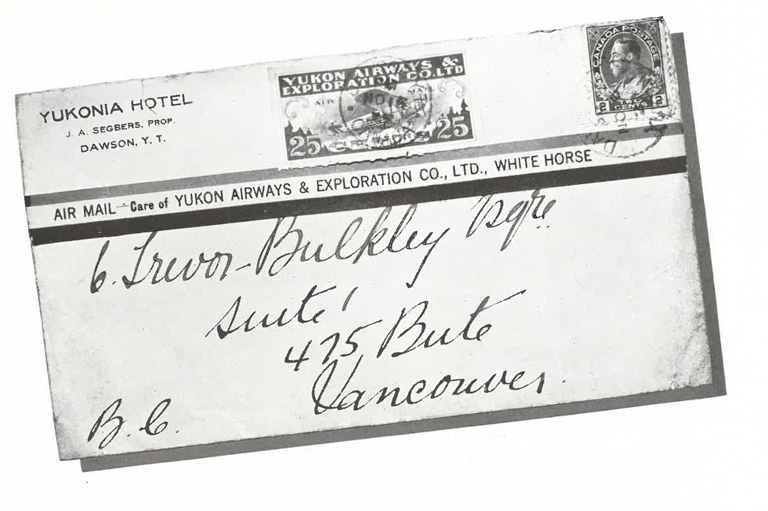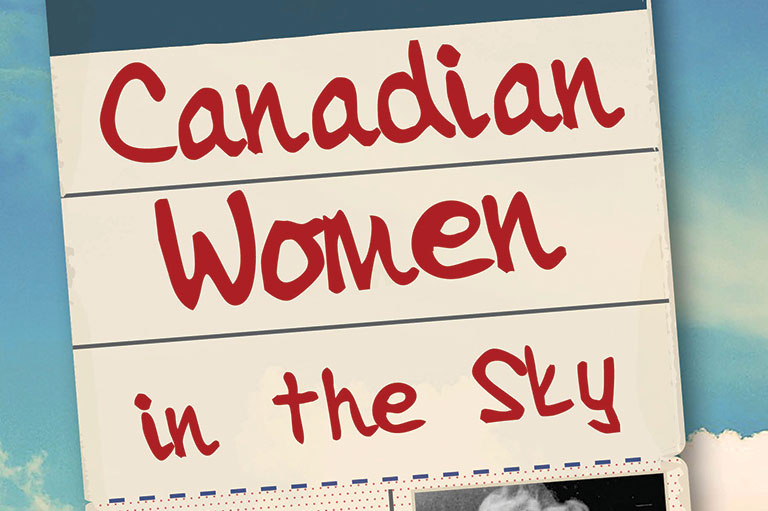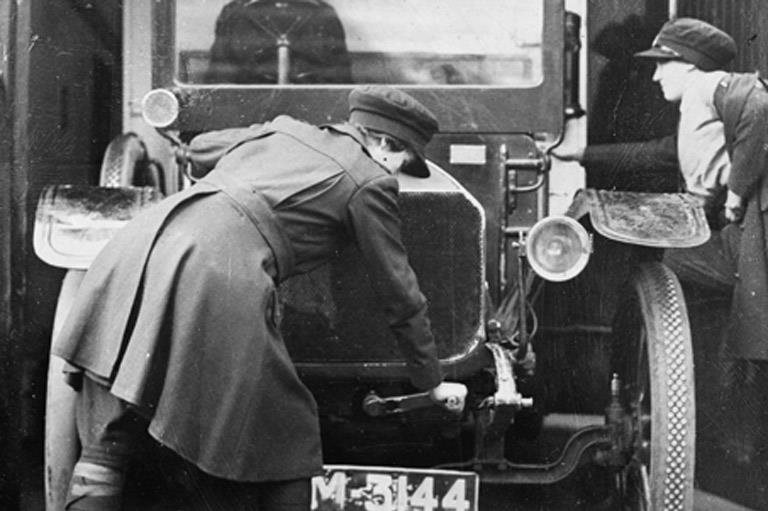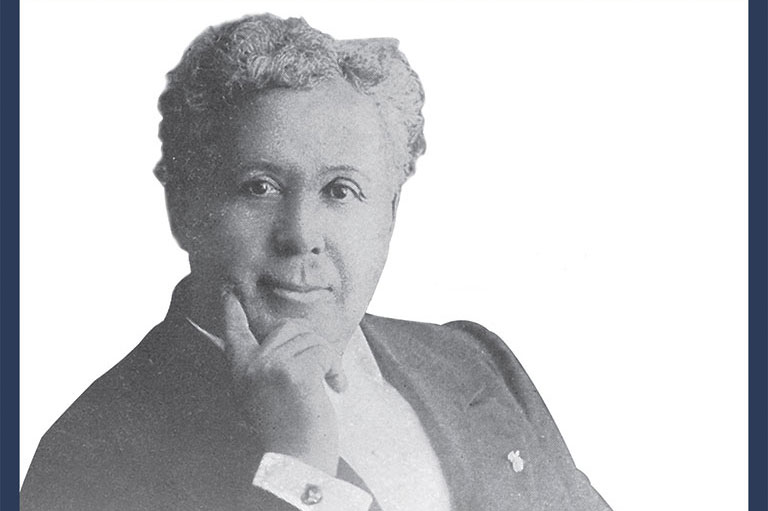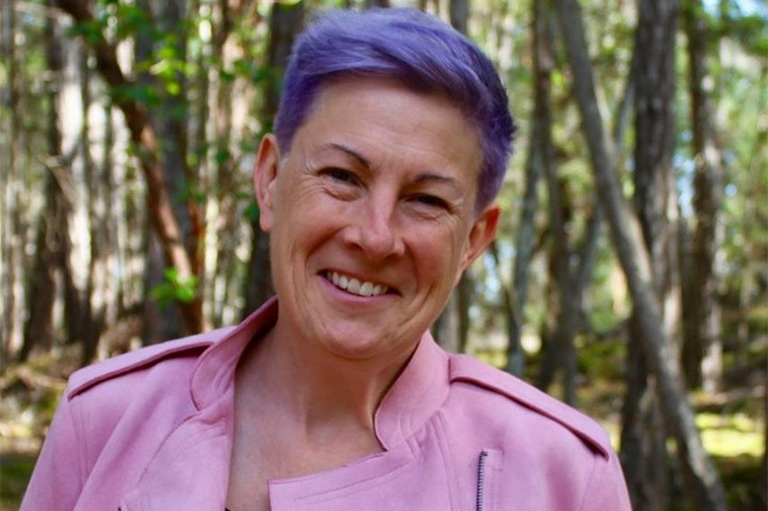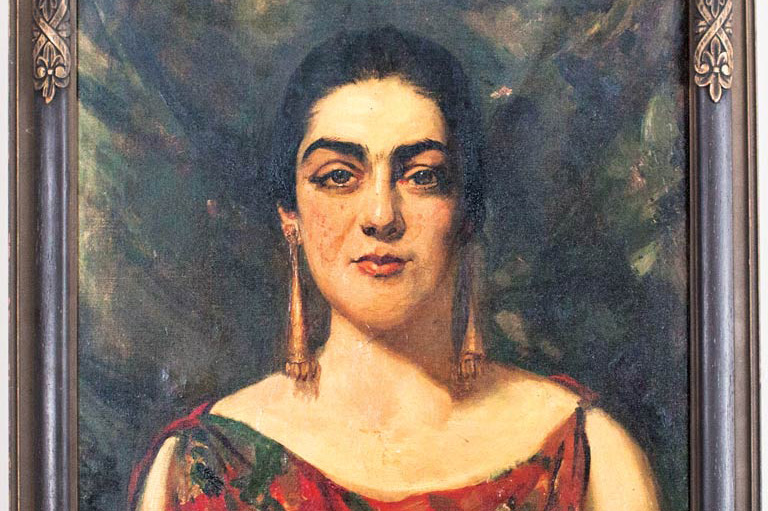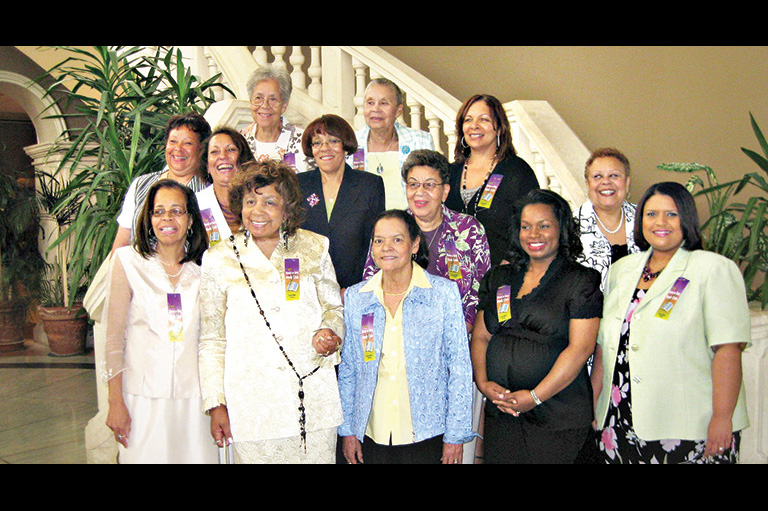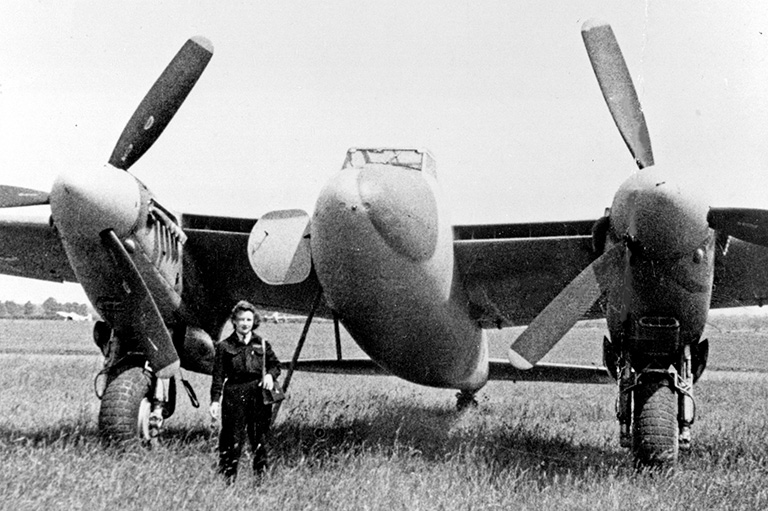Unacquainted with Fear
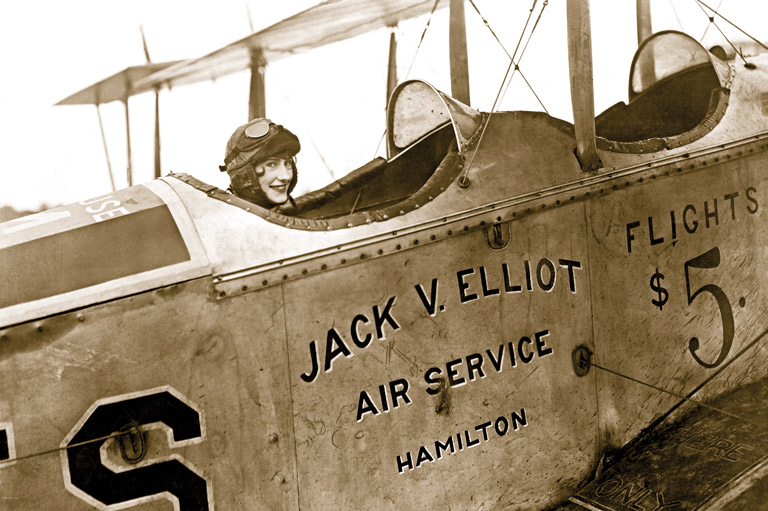
As Eileen Vollick soared into the sky for her first ride in an airplane, she didn’t care that she was subjected to something of an aerobatics routine. “The pilot who took me aloft thought he would either frighten me or find out how much courage I possessed. It is against the rules to stunt, to do spins, loops or zooms. I got mine for half an hour.”
Whatever the pilot’s motives — Vollick even suggested that the instructor might have been testing her tolerance for flying at unusual angles — she didn’t take the experience personally. In fact, she found the stunts thrilling.
“My first flight was an epoch of my life never to be forgotten,” she wrote in a June 1928 article for Canadian Air Review. “No matter what I may achieve in the future, the exhilaration of that flight will linger when all others are merely an event.”
That memorable first flight took place on June 9, 1927, shortly before Vollick’s nineteenth birthday. Although she was comfortable in the cockpit, she described feeling overwhelmed by the view as she climbed skyward.
“I saw the earth recede as the winged monster roared and soared skyward. Familiar scenes below became a vast panorama of checker-boarded fields, neatly arranged toy houses, and silvery threads of streams. The pure joy of it, gave me a thrill which is known only to the air-man who wings his way among the fleecy clouds.”
As the title of that magazine article makes clear, Vollick’s ultimate achievement helped to open the skies to other women: “How I Became Canada’s First Licensed Woman Pilot.” A little more than ninety years ago, on March 13, 1928, she earned the seventy-seventh pilot’s licence issued in Canada, which was the first earned by a woman.
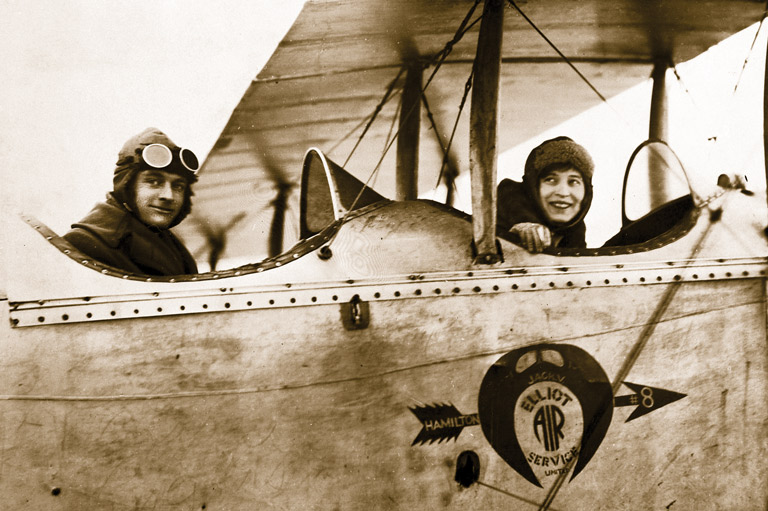
When Mary Eileen Vane Riley was born on August 2, 1908, no Canadian had yet flown. The first powered flight in Canada took place a few months later on February 23, 1909, near Baddeck, Nova Scotia, when Jack McCurdy flew the Silver Dart, built by a team led by Alexander Graham Bell.
With the onset of the First World War, flying opportunities for Canadian men came through the military, which retained control of flight training and licensing for nearly a decade after the war. Women were not allowed in the military, so they had no access to aviation in Canada.
Born in Wiarton, Ontario, Riley was the third daughter of Marie and James Riley. Eileen never knew her father, who was killed in a mining accident in northern Ontario near the time of her birth. Thrust into single parenthood, Marie undertook various jobs, including sewing and writing. Her daughter Audrey recalls that Marie even wrote children’s books using a nom de plume.
Three years after James’ death, Marie married a marine engineer named George Vollick and moved with her daughters to Hamilton. She and George subsequently had two daughters and a son, and all six children went by the name Vollick. George was often away on oil tankers for long periods of time, so Marie was largely responsible for raising the children. A strong woman with an unconventional streak — a granddaughter remembers her as a live wire who wore unique hats — Marie supported Eileen in her desire to become a pilot.
After completing high school, Eileen Vollick became a textile analyst and assistant designer with the Hamilton Cotton Company. In 1927, from her home at Van Wagner’s Beach just outside Hamilton, a fascinated Eileen watched the building of Jack Elliott’s Air Service aerodrome at Ghent’s Crossing, the first flying school in Canada where civilians could learn to fly. “From my window I could see the activities going on at the aerodrome, of making the runway, the building of hangars, and finally the installing of planes.”
Observing the Curtiss JN-4 biplane’s early flights from her apartment window, Eileen became obsessed with a desire to fly, even though the option wasn’t open to her.
With 7 uniquely curated newsletters to choose from, we have something for everyone.
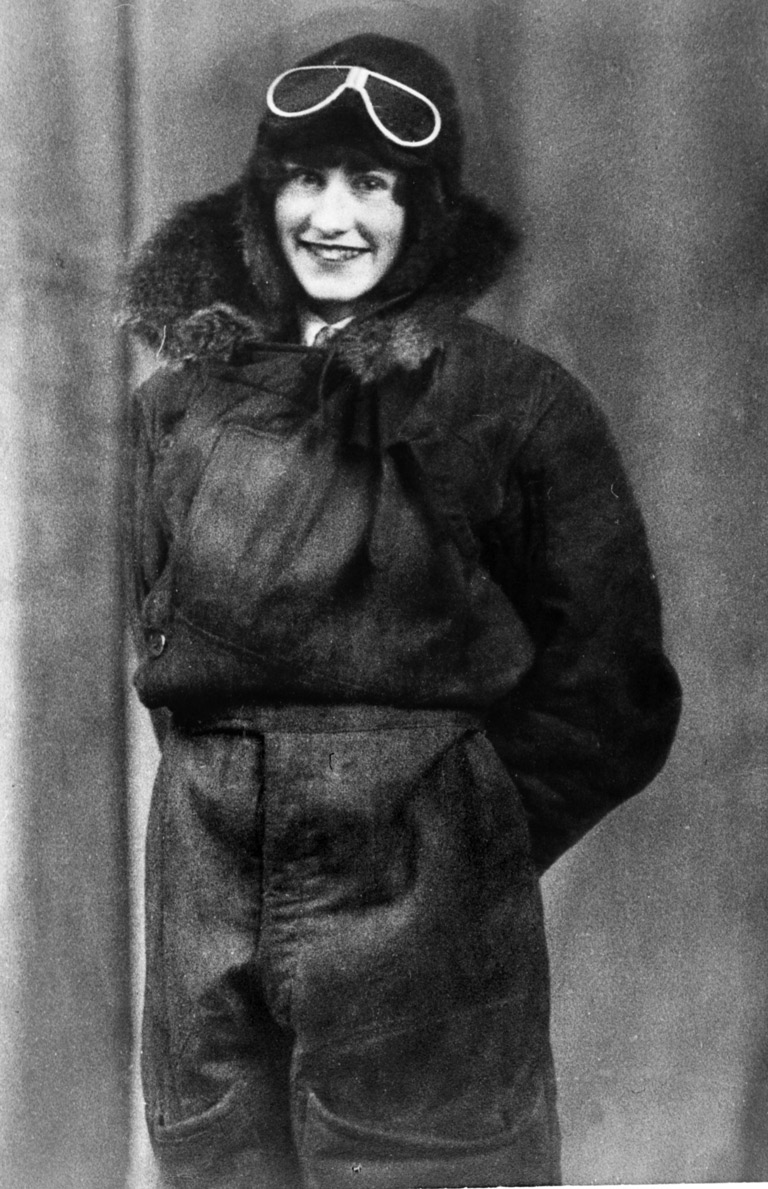
Men had become pilots as part of the Canadian effort for the First World War. As military pilots they didn’t require pilot’s licences. When the war ended, the Canadian military issued civilian licences to men who left the air force but wanted to continue flying. A few bought surplus warplanes and started their own companies hauling supplies and equipment and giving joyrides.
Other pilots remained in the Canadian Air Force, later renamed the Royal Canadian Air Force, exploring and mapping the Canadian North or spotting forest fires. These flights allowed military pilots to maintain their flying skills. With the military responsible for these duties, there was no apparent need for training civilian pilots.
During the 1920s, responsibility for civil aviation bounced between the Canadian Air Force and the Directorate of Civil Government Air Operations, until it stayed with the directorate (later Transport Canada) from 1927. The government initiated the development of flying clubs as part of a national training program, finally providing opportunities for civilians — civilian men, that is — to learn to fly.
Eileen was inspired to break in to the formerly male-only domain. “As I drove past the aerodrome a small still voice whispered, ‘Go ahead, brave the lion in his den.’ I proposed to learn to fly, and feared being turned down or laughed at.”
Vollick wavered, wondering what was required to fly an airplane and how to approach Jack Elliott. “I have never been afraid to go after anything I wanted and to stay until I got it,” she wrote, so “one day I ventured into the proprietor’s den, and asked him, ‘Can a girl learn to fly?’”
Elliott did not immediately accept Vollick as a student but suggested she write to the government with her request. Not only did she want to fly a plane, she wanted to work as a pilot, something that would require a commercial licence. With the military in the process of transferring responsibility for regulating flight training to civilian government officials, the rules were in transition.
In the letter from the Department of Defence — the missive was addressed to Mrs. Marie Vollick, who must have written on behalf of her eighteen-year-old daughter — the controller of civil aviation replied, “in future, certificates may be granted to pilots of either sex. It is necessary that a pilot should have reached the age of nineteen years before he may be granted a certificate to fly commercially.”
With permission granted, Vollick immediately began flying lessons. At five feet, one inch tall, she had to sit on cushions to reach the controls of the Curtiss JN-4 “Jenny” biplane. In June and July of 1927, Vollick made eleven flights totalling six hours and twenty minutes.
She quickly learned where to focus.
“The most important factors are ‘taking off’ and ‘landing,’” she wrote in the Canadian Air Review article. “Anyone can fly straight and keep towards the horizon, but rising from the ground and returning, is a different matter. The most trying sensation of a flight comes when the plane glides rapidly earthward and one feels that familiar ‘elevator’ feeling. Even that sensitiveness passes after a few flights.”
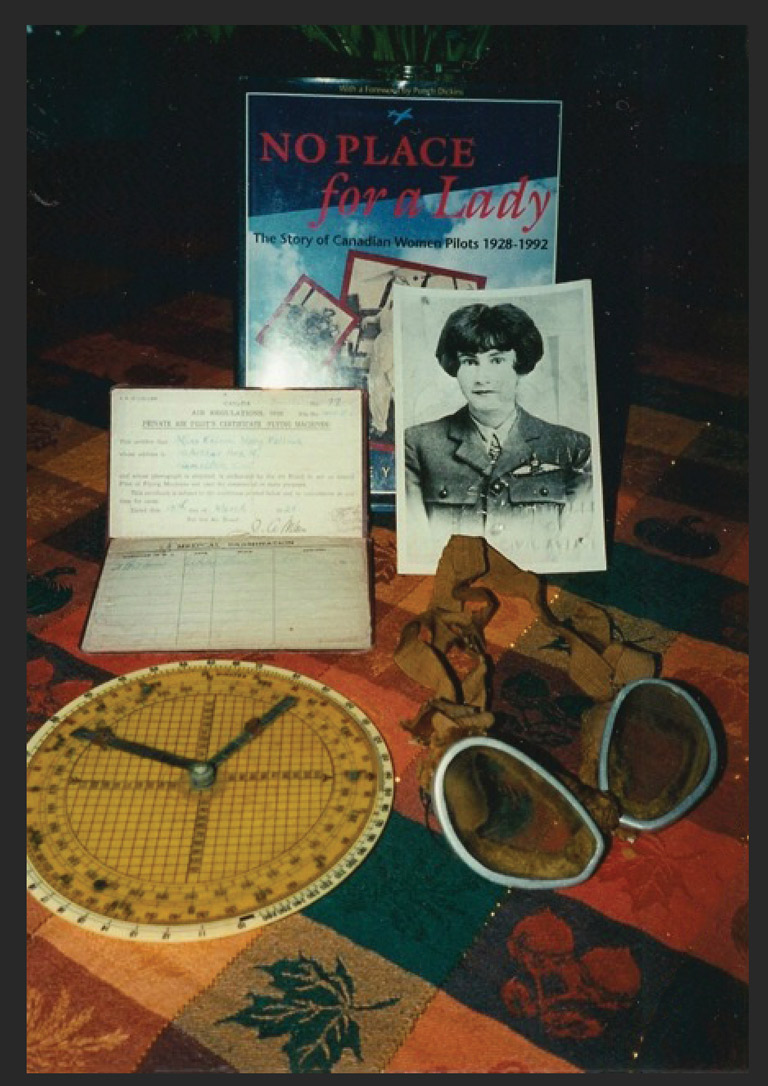
Vollick believed that “a flyer must never make acquaintance with ‘fear’ if he or she wants to become a successful pilot.” Soon after her first few flights, she demonstrated her bravery with a feat that few other pilots would be prepared to repeat.
“As proof that my sense of fear is small, I took the parachute jump from the wing of the plane into the waters of Hamilton Bay, from an altitude of 2,800 feet [850 metres]. It takes a great deal of confidence to walk the wing of an airplane and jump into space, especially when the controls are in the hands of a strange pilot. But I felt no fear.”
In a later interview, Eileen’s sister Audrey recalled that as she and their mother were watching the parachute jump they realized that the boat that was supposed to pick up Vollick was not in position. Vollick released her parachute and then swam a considerable distance before the boat retrieved her. Audrey also remembered that Jack Elliott was not pleased to have lost a parachute.
Newspaper reports of Vollick’s jump, and of her ambition to be the first woman pilot in the country and to fly across Canada, prompted some interesting letters. A Vancouver woman sought advice on behalf of her son who wanted to fly. A young Sudbury woman naively asked if Elliott’s school paid Vollick a salary while she was learning to fly.
Vollick was offered a skydiving contract to do a daily jump at the Canadian National Exhibition, which she declined, noting, “Parachute work, however, was not my ambition. I wanted to fly.” She thought she might work flying mail one day.
Until then, flight continued to be exhilarating for Vollick, who soon tackled early morning flying as a key to becoming a success. “After several flights off the ice on Hamilton Bay, I made arrangements to fly as early as possible.”
To accommodate these flights the mechanical crew fuelled the plane and warmed the engine so that it was ready when Eileen and her instructor arrived before sunrise. Eileen left her “cozy cot”and drove to Elliott’s flying school. She donned a pair of George Vollick’s coveralls, which her mother had restyled into a lined flying suit that didn’t offer much warmth. Fortunately her wool-lined leather helmet and fur-lined goggles helped to break the wind that streamed through the open cockpit.
“With the tang of ice and frost upon pilot, plane and student, we rose from the hardened ground, winged our way over the icy bay, across the cold waters of Lake Ontario, and after ‘landing’ and ‘rising’ several times, we flew back to port, full of early morning pep, which the sluggard abed can never fully comprehend. Eight a.m. found me on my way to the Hamilton Cotton Co.”
After earning her pilot’s licence, Vollick received several invitations to give speeches or to perform aerobatic domonstrations in Canada and the United States.
During a six-month break from flying lessons, Vollick attended ground school with thirty-four male students, whom she described as being polite and helpful. She made detailed notes on topics that are still covered in ground school classes today, such as engine design, operation, and theory of flight.
No doubt the time away from flying allowed her to save money for more lessons, which she resumed again in February 1928. Because of the snow, she flew the Jenny on skis rather than wheels. At a cost of thirty dollars, she flew ten more hours, to prepare for her flight test and to complete other licence requirements.
On February 28, Vollick flew the required 175-mile (281-kilometre) cross-country flight with her instructor, Richard Turner. It was –5.3°C when they left Hamilton, and as they climbed the temperature dropped at a rate of two degrees per three hundred metres.
Vollick hardly had time to get cold during training flights, which averaged half an hour, as she developed various skills for the flight test. But two and a half hours in the frigid air left her frozen as the breeze whipped around the windscreen and swirled around her in the open cockpit, rather like driving in a convertible with the top down at –10°C.
Such was her love of flying that Vollick even expressed enthusiasm for her pretest flight with the government examiner, even though he didn’t fly with any of the male students to assess their abilities.
Standards were indeed more rigorous for women pilots. “The day previous to the tests I had the extreme pleasure of taking Captain G.B. Holmes, Government Inspector, for a flight, and he gave me great credit for the able manner in which I handled the plane.”
By the day of the flight test, the temperature had climbed to six degrees, providing a more pleasant environment in which to focus on the examiner’s skill-testing assignments.
To earn a licence, a student was required to land four times from a height of 1,500 feet (457 metres) within 150 feet (45 metres) of a spot marked by the examiner sitting in his car, and to land once from 5,000 feet (1,524 metres) with the motor shut off.
On March 13, 1928, with sixteen hours and twenty-five minutes of flying instruction, Eileen Vollick earned her pilot’s licence. The Hamilton Spectator reported the successful flight tests by eleven of the thirty-five cadets from Jack Elliott’s school, stating, “while she will continue to hold her present position in the office of the Hamilton Cotton Company, Miss Vollick intimates she intends to take up commercial aviation in the near future, but is undecided which branch to follow.”
Sex role stereotyping was alive and well; the next day, the Spectator commented, “Wonder what the local girl who has received her aviation license would do if she discovered a mouse in her plane?”
There were no similar comments about the ten male candidates who also passed the flight test. Neither did the Spectator report on the fact that the examiner had flown with Vollick the day before her flight test but had not required any of the male students to do likewise.
After earning her pilot’s licence, Vollick received several invitations to give speeches or to perform aerobatic demonstrations in Canada and the United States. Family members recall Amelia Earhart inviting Vollick to join her in a goodwill flying tour. The tour didn’t materialize, possibly because Earhart was invited to be a passenger on a transatlantic flight in June 1928.
While visiting her sister Gladys in March 1929, Vollick attended the dedication of Holmes Airport in New York City and met James Hopkin, a steamfitter. Six months later, they were married at St. Patrick’s Church Rectory in Hamilton and moved to Elmhurst, New York. They had two daughters, Joyce and Eileen.
Save as much as 40% off the cover price! 4 issues per year as low as $29.95. Available in print and digital. Tariff-exempt!
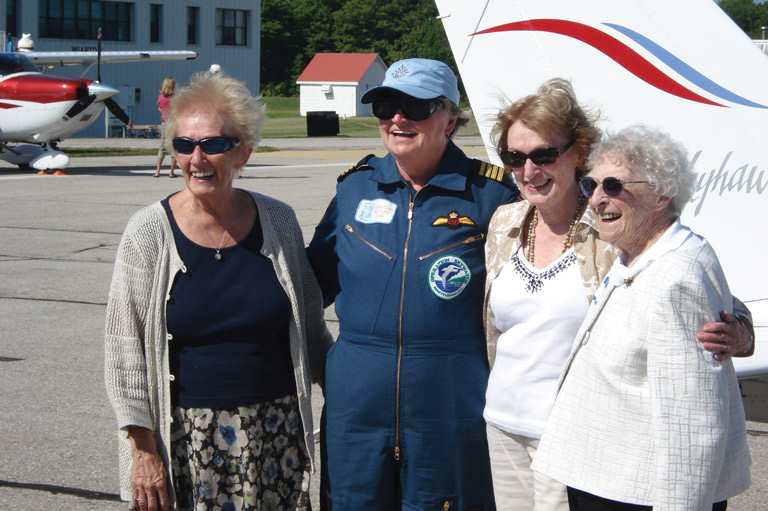
Following her marriage, Vollick gave up flying. At that time married women did not seek paid employment unless their husbands were unable to provide for their wives and families. It is also possible that Vollick didn’t continue with her earlier aspirations because flying commercially would have required additional American qualifications.
Though Vollick triumphed over so many societal expectations in learning to fly and becoming Canada’s first licensed female pilot, once she was married her husband and children took priority. Though she dearly loved her family, Vollick often regretted giving up flying. On September 27, 1968, she died at the age of sixty in Elmhurst.
Vollick gave up flying in order to raise her family, but she clearly passed on an interest in aerial activity. In 2008, her daughter Joyce Miles celebrated her seventy-sixth birthday with a three-generation parachute jump. Joyce, her son Jim Miles, and her granddaughter Danielle Yerdon all jumped from three thousand metres. Also in 2008, Vollick’s ninety-two-year-old sister Audrey Hopkin realized her own dream of many years when she took the controls of an airplane and flew the instructor and Vollick’s daughters Joyce and Eileen Barnes across Ontario’s Bruce Peninsula.
Despite Eileen Vollick’s achievements, all major acknowledgements of her success were granted posthumously. Many family members have participated in celebrations of her legacy. In 1975, International Women’s Year, the First Canadian Chapter of the Ninety-Nines, the international organization of women pilots, awarded Vollick the Amelia Earhart medallion for her outstanding contribution to aviation.
In 1976, the Ninety-Nines and the Ontario Heritage Foundation erected a historic plaque at Hamilton Civic Airport to celebrate Vollick’s groundbreaking achievement.
And in 1978 Vollick was honoured at the International Forest of Friendship, a serene park near Amelia Earhart’s birthplace, Atchison, Kansas, that honours individuals from many countries who have made significant contributions to aviation. A meandering pathway weaves among trees native to the countries of honourees.
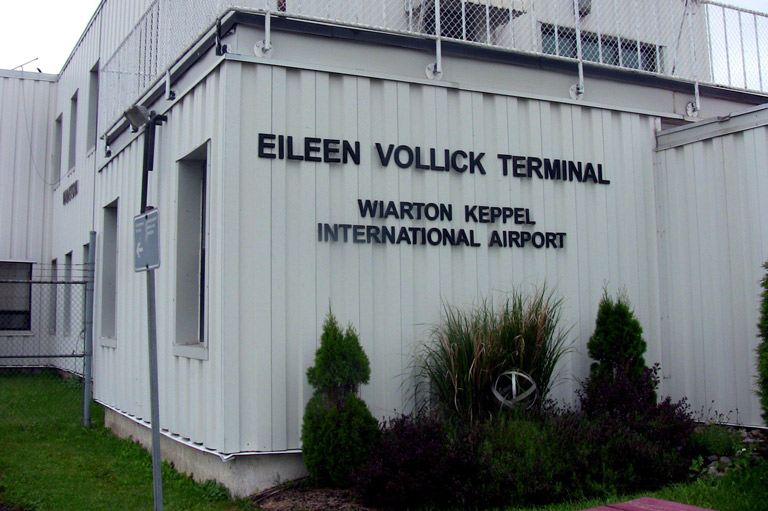
On August 2, 2008, the one hundredth anniversary of Vollick’s birth, the Wiarton Keppel International Airport near Owen Sound, Ontario, recognized her by naming the terminal building after her. A display inside the Eileen Vollick terminal celebrates her accomplishments. That same day the East Canada Section Ninety-Nines issued a customized postage stamp to celebrate her contribution to Canadian aviation.
Vollick was aware of her contribution to Canadian aviation history, but she was also remarkably modest about it, considering the young age at which she took to the air.
It was her fame as Canada’s first licensed female pilot that led to several invitations to flying events. Those included her invitation to the event where she met the man she would marry, and it was their marriage that led to her move to the United States and her retirement from aviation.
Had Vollick not been inappropriately introduced to stunts, spins, and loops during her first thrilling flight, would she have been more content with less-exciting flying and have stayed in Canada to continue as a pioneering aviator after earning her licence?
The culture of the time makes that doubtful. Nevertheless, and despite her short time as a pilot, Eileen Vollick broke stereotypes and made a new future possible for the women who came after her.
Canada’s Flying Firsts
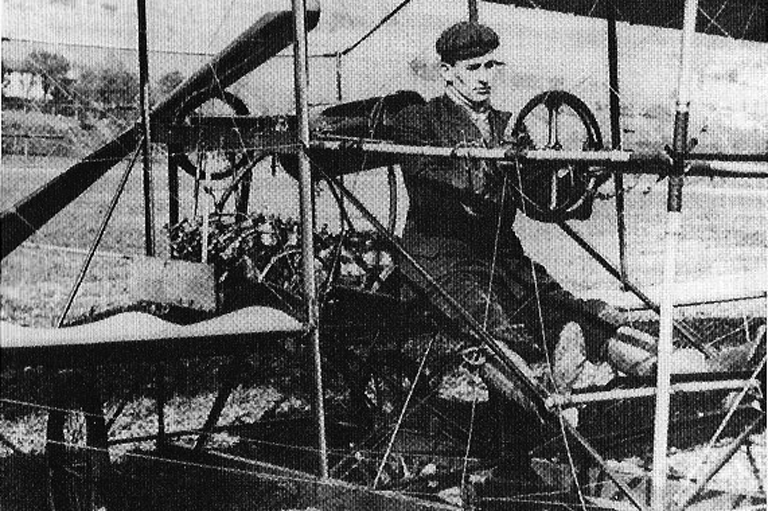
1909
First Flight
On February 23, 1909, J.A.D. McCurdy first flew the Silver Dart at Baddeck, Nova Scotia.
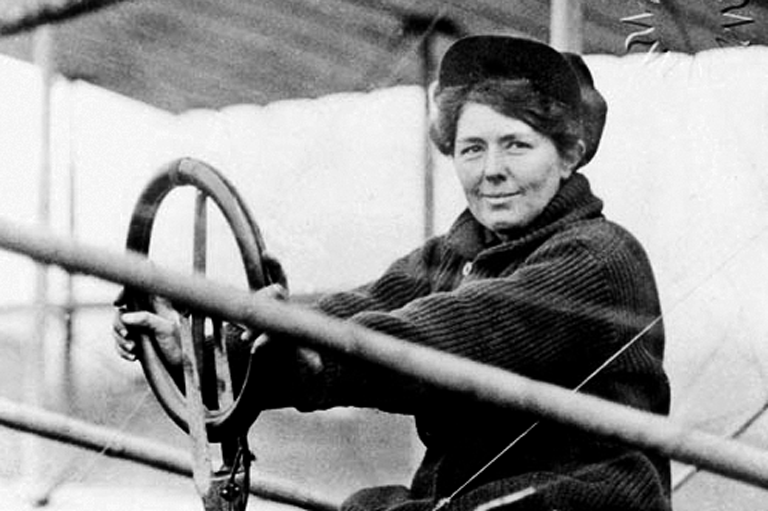
1913
First Woman
On July 31, 1913, American Alys McKey Bryant flew solo for sixteen minutes and made a flawless landing at Minoru Park in Vancouver.
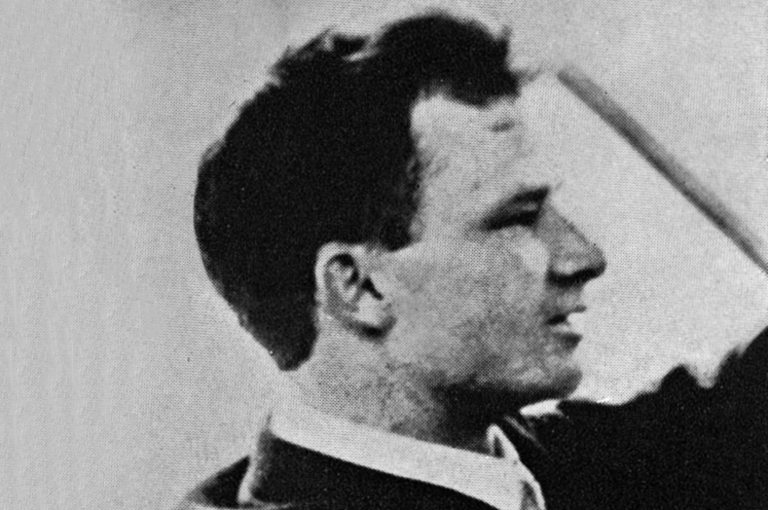
1913
First Fatality
Johnny M. Bryant (husband of Alys McKey Bryant) died after crashing into a building in Victoria, on August 6, 1913.
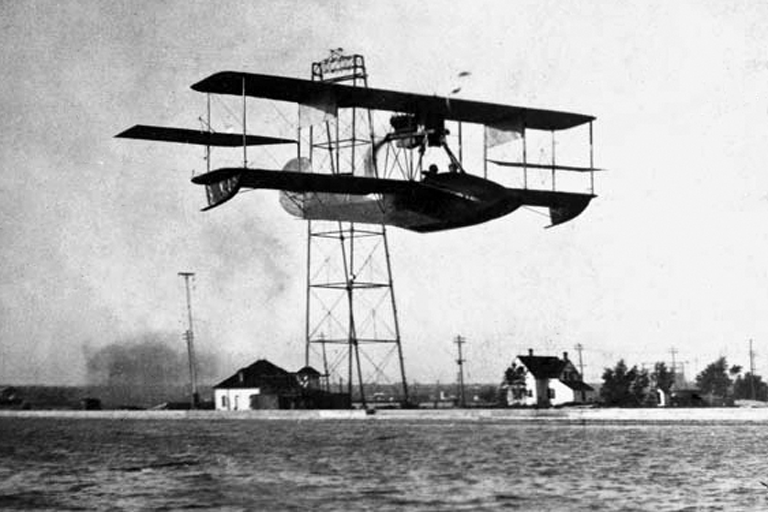
1915
First School
Curtiss Aviation School in Toronto opened in 1915 and trained the first of Canada’s First World War pilots.
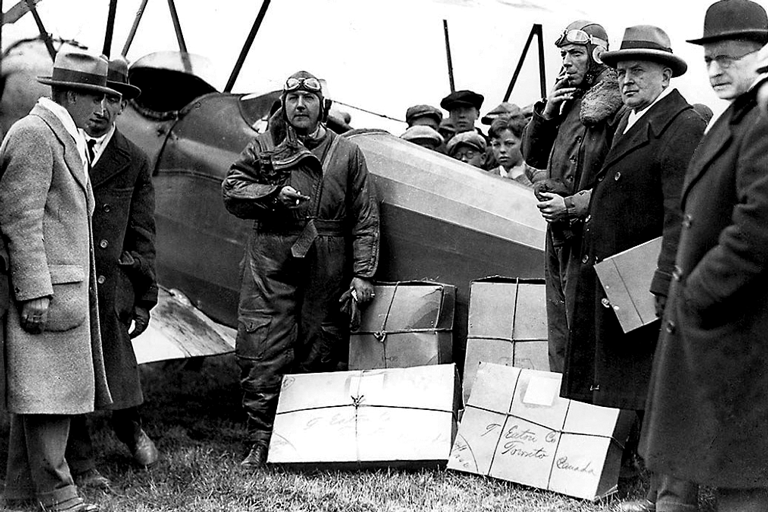
1918
First Airmail
Royal Air Force Captain Brian Peck carried Canada’s first airmail — 120 letters — from Montreal to Toronto on June 24, 1918.
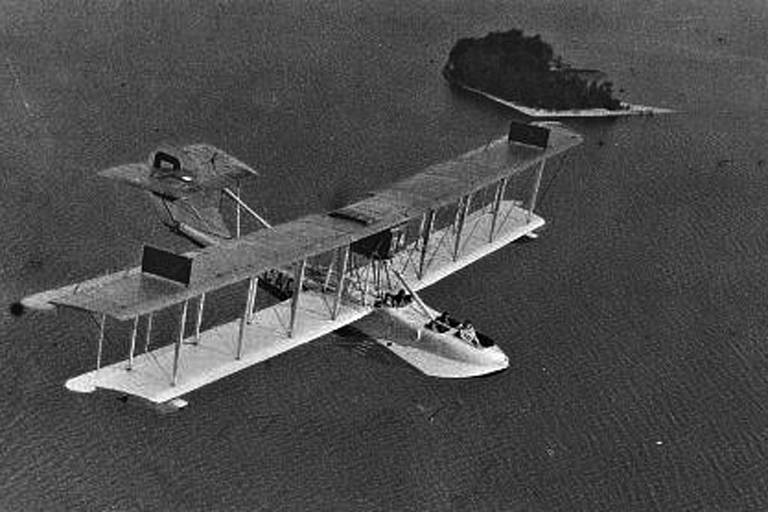
1920
First Trans-Canada Trip
A Canadian Air Force project took ten days (October 7 to 17, 1920) to fly from Halifax to Vancouver using several pilots and aircraft.
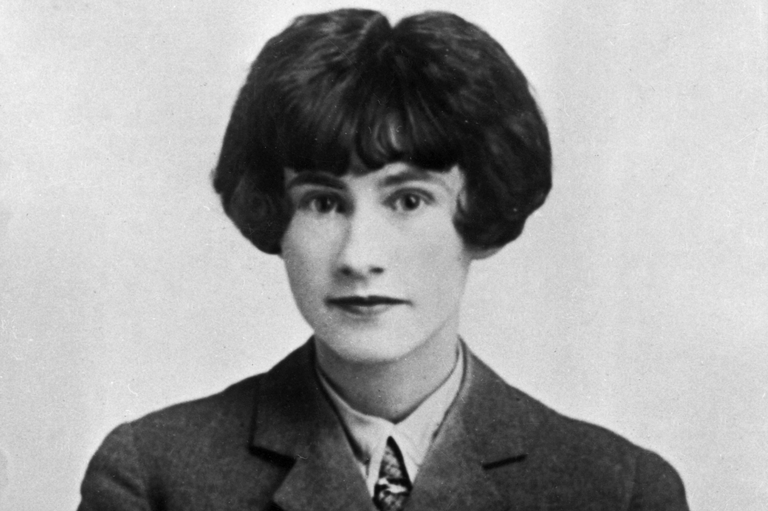
1928
First Licensed Female Pilot
Nineteen-year-old Eileen Vollick earned her pilot’s licence on March 13, 1928, near Hamilton.
If you believe that stories of women’s history should be more widely known, help us do more.
Your donation of $10, $25, or whatever amount you like, will allow Canada’s History to share women’s stories with readers of all ages, ensuring the widest possible audience can access these stories for free.
Any amount helps, or better yet, start a monthly donation today. Your support makes all the difference. Thank you!
Themes associated with this article
Advertisement
You might also like...

Canada’s History Archive, featuring The Beaver, is now available for your browsing and searching pleasure!

